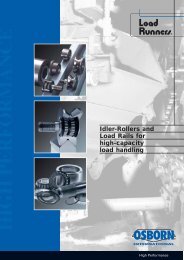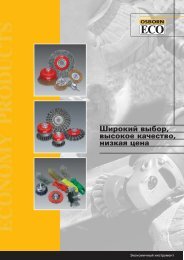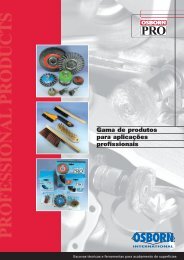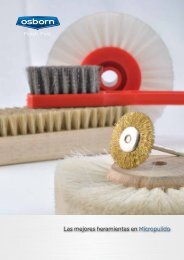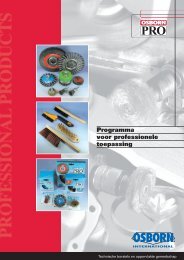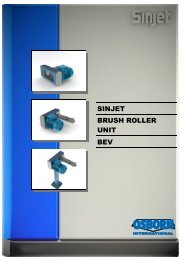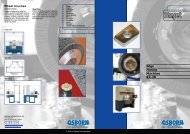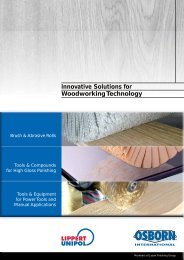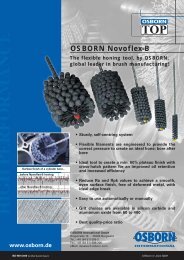You also want an ePaper? Increase the reach of your titles
YUMPU automatically turns print PDFs into web optimized ePapers that Google loves.
BRUSHES<br />
Introduction & technical information<br />
TECHNICAL<br />
INFORMATION<br />
Safe and operating speeds<br />
The workplace safety regulations require the maximum safe speed to be observed. Details<br />
can be found in the product overview in this catalogue, on the packaging and on the<br />
brush itself (see fig.). The definition of operating speed is based on the peripheral<br />
speed and brush diameter. The ideal operating speed is generally significantly lower<br />
than the safe speed.<br />
Operating and clamping width of the brush<br />
The operating width describes the contact surface between brush and workpiece.<br />
Press the trim together slightly to measure the operating width.<br />
The clamping width is measured between the washers (see fig. left).<br />
Contact us for more information on the clamping width.<br />
Brush diameter and trim length<br />
The relationship between the diameter of the brush (brush body) and the length of the<br />
trim determines how the brush operates. Generally speaking:<br />
Soft, flexible <strong>brushes</strong>, e.g. for<br />
finishing structured workpieces<br />
or surface cleaning.<br />
Trim length<br />
Brush body Ø<br />
More aggressive<br />
brushing, e.g. for<br />
deburring or removing<br />
impurities.<br />
Ideal position of brush in relation to workpiece<br />
The contract pressure of a brush is defined by factors such as its insertion depth in the<br />
workpiece.<br />
Our recommendation is 3 times the filament diameter, e.g. 1.0 mm insertion depth for a wire<br />
thickness of 0.35 mm.<br />
The ideal position also ensures less wear. Our application engineers will be glad to advise.<br />
Brush trim density<br />
The trim density is determined by the number of wire tips per surface unit.<br />
High trim densities are best for cutting performance and service life (e.g. deburring).<br />
Lower trim densities increase brush flexibility and are required for finishing intricately<br />
shaped surfaces.<br />
Any questions? We will be glad to help: service@osborn.de<br />
13



